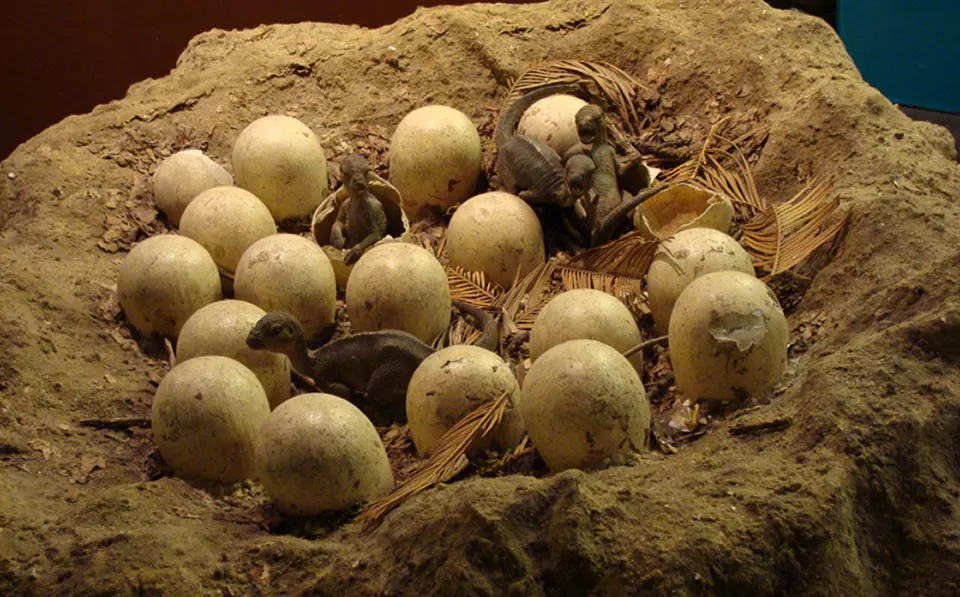In 1978, Bynum, Montana resident Laurie Trexler would discover a new species which would later be dubbed Maiasaura. Later in that same year, Marion Branvold would find more of the same species in a badlands area near Choteau, Montana. What would soon be named Egg Mountain is a promontory in the badlands area, a part of the fossil-rich Two Medicine formation present throughout the Rocky Mountain Front of Montana and north into Alberta. What Branvold found would upend long-held ideas about dinosaurs in the field of paleontology and eventually give Montana its official state fossil.
Branvold had discovered nests of a hadrosaur (“duck-billed” dinosaur), as well as specimens of the same hadrosaurs at several different stages of life. It soon became clear that these hadrosaurs were living in herds throughout the course of their lifetimes. This was a revolutionary find, changing the way paleontologists conceived of dinosaur behavior and life cycles.
Maiasaura means “good mother reptile”. This name was bestowed upon the new hadrosaur species due to the discovery of dozens of Maiasaura nests, many with eggs, of course. The significance of the Egg Mountain discovery led to Maiasaura peeblesarum becoming Montana’s state fossil.
The Old Trail Museum has an Egg Mountain exhibit, as well as two Maiasaura life-sized models. We also have a replica skull of an Einiosaurus and its life sized model. The name of this species borrows the Blackfeet word einio to make the name “buffalo-lizard”. This species is a ceratopsian (same family as the more famous triceratops) found on the nearby Blackfeet reservation and as of now has only ever been found in Montana.
